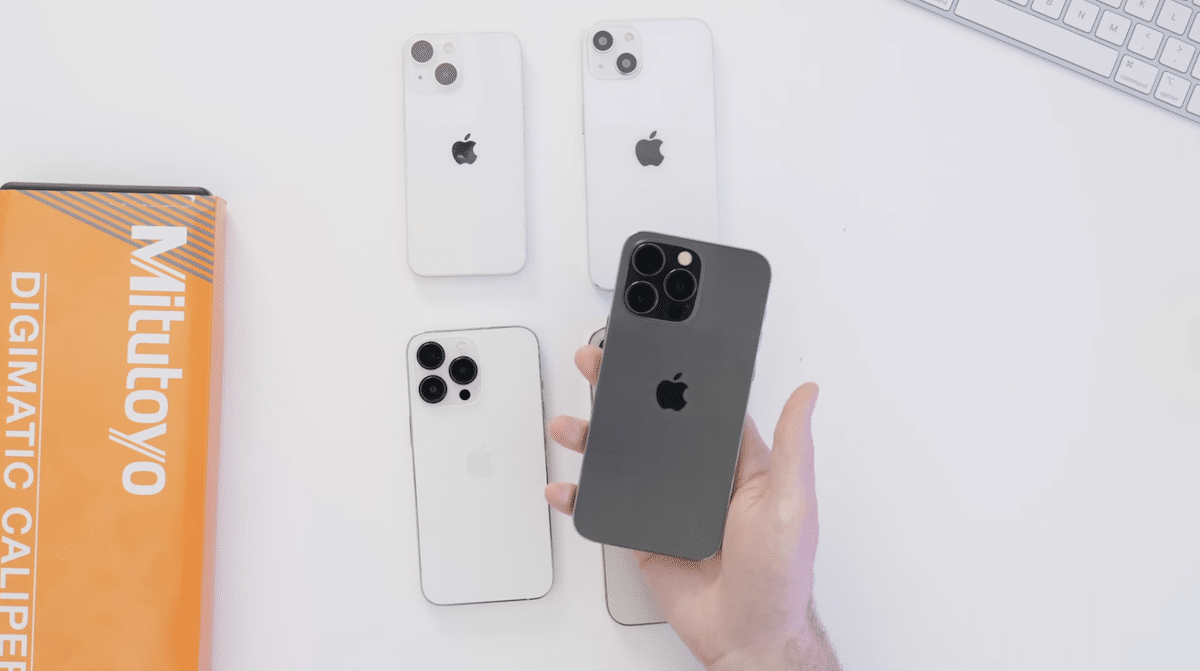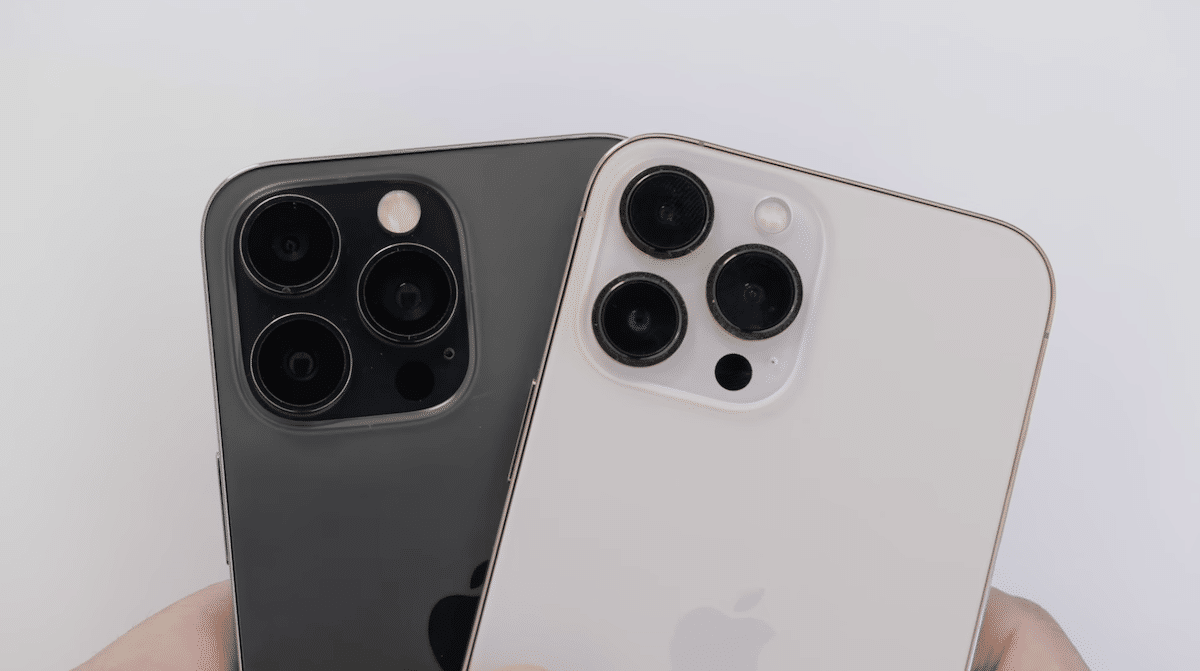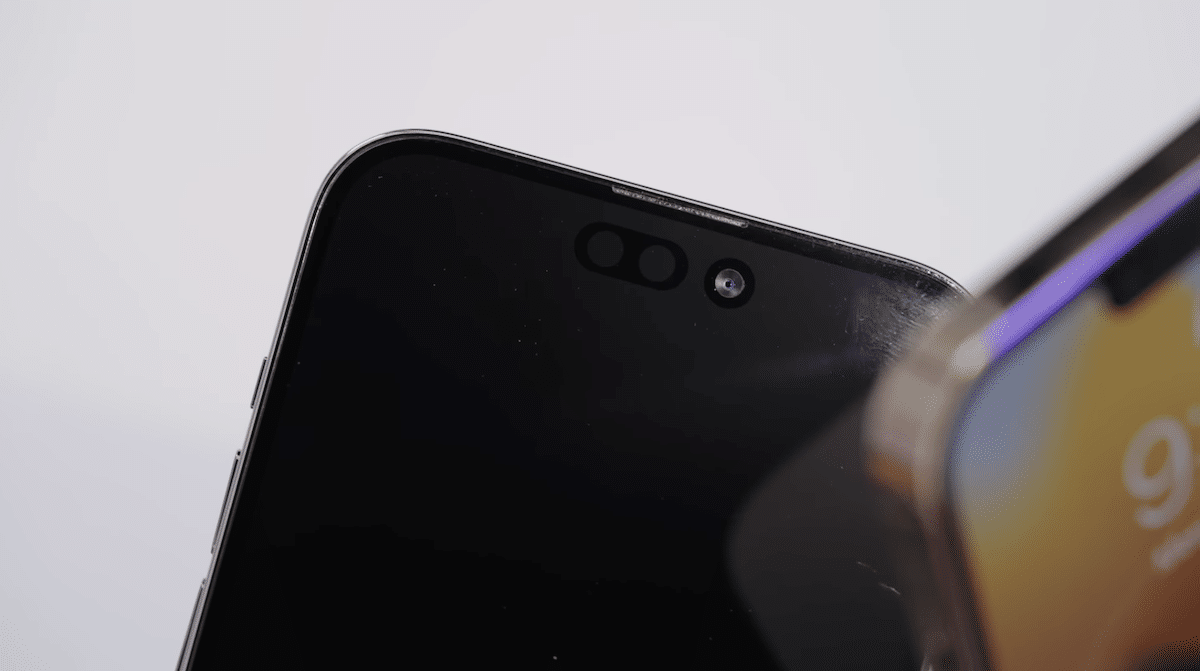The new iPhone 14 series is expected to launch in September this year. So, only a few months away from the launch, several sources have shared alleged design details of the upcoming series.
Based on the known CAD renders and schematics, YouTuber @Unbox Therapy unveiled a premium mockup or dummy model of the new iPhone 14 Pro Max to compare it to the current iPhone 13 Pro Max. We have listed down all the differences and similarities between the models shared by Unbox Therapy.

iPhone 14 Pro Max will have more screen to border ratio thanks to the new “pill+hole” notch
In comparison to the current iPhone 13 Pro Max, it is reported that iPhone 14 Pro Max will be slightly taller, thicker, and have 20% reduced bezels. It will feature a bigger camera module and larger lens rims because of the improved 48MP camera lens.
In his new video, @Unbox Therapy used a caliper to check the differences in the dimensions of the two models’ designs: A black iPhone 14 Pro Max (dummy) and gold iPhone 13 Pro Max.

| Dimensions | iPhone 14 Pro Max | iPhone 13 Pro Max | |
| Notch | Pill + Hole notch with Face ID and Selfie camera | 26mm wide notch with Face ID and Selfie camera | |
| Height | 160.7mm | 160.8mm | |
| Thickness | 7.80mm | 7.65mm | |
| Widht | 77.6mm | 78.1mm | |
| Rear camera module | 40.3mm | 38.75mm | |
| Rear camera lens | 16.17mm | 15.51mm | |
| Charging port | USB-C to Lightning | USB-C to Lightning |

According to the YouTuber, the overall flat edge-to-edge design language and aesthetics of the upcoming 6.7-inch iPhone 14 Pro Max will be very “familiar” to its predecessor. However, the screen-to-border ratio will be more than the previous model because of the more compact “Pill + Hole” shaped notch which will feature a FAce ID sensor and selfie camera.
He also reiterated that the 2022 iPhone series would feature four models: iPhone 14, iPhone Max, iPhone Pro, and iPhone 14 Pro Max; the 5.4-inch iPhone mini model will be discontinued.
Other reports claim that the new iPhone series will be powered by an A16 Bionic chip, and Pro models will support satellite connectivity.
Read More: